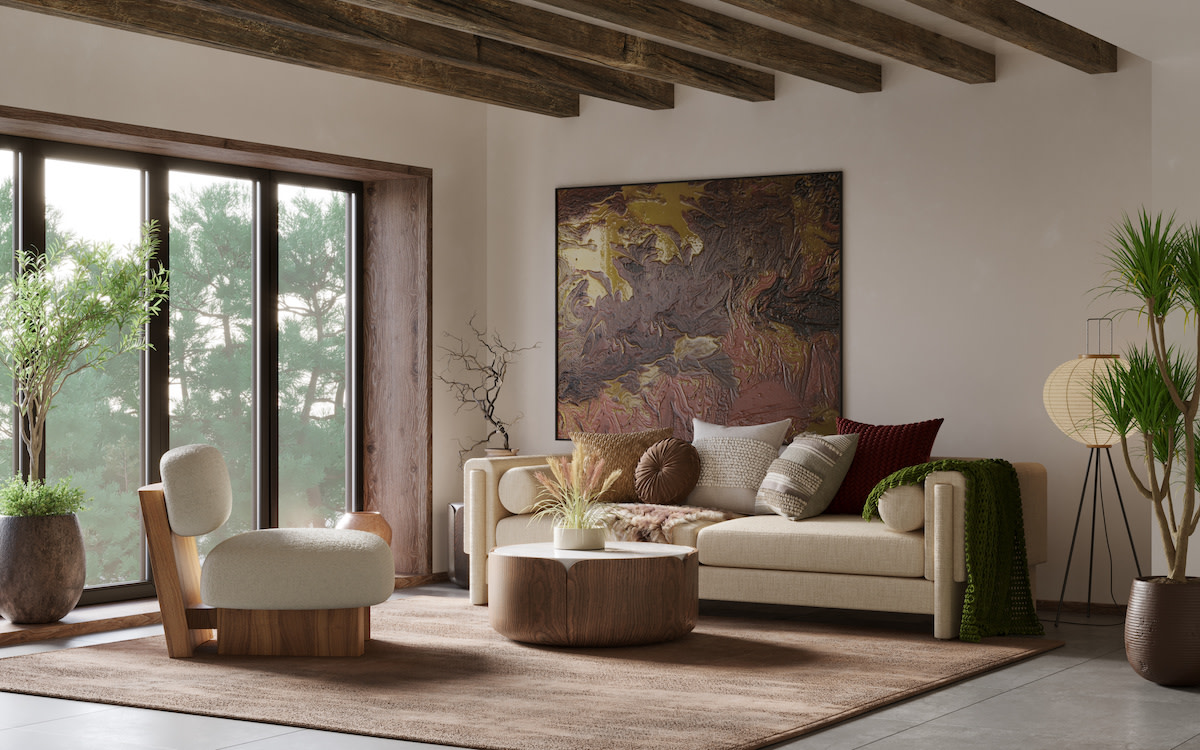Wabi-Sabi Basics: Adding Wabi-Sabi Style to Your Home
Written by MasterClass
Last updated: Aug 18, 2022 • 3 min read
Wabi-sabi is a Japanese philosophy that recognizes imperfection as a state of beauty. Discover the origins of wabi-sabi and how to integrate this aesthetic into your home.
Learn From the Best
What Is Wabi-Sabi?
Wabi-sabi is an ancient Japanese mindset that appreciates the ephemeral and imperfect essence of life. By emphasizing simplicity and serenity, wabi-sabi is a way of life that rejects ideas of perfection and materialism. Modesty, intimacy, roughness, asymmetry, and the passage of time are key elements of wabi-sabi. This ideology also implies a connection with the natural world, as it values the constant flow of existence and the inevitability of transience.
The wabi-sabi philosophy has extensive influences across different facets of Japanese culture. This state of peace and acceptance applies to literature, Zen gardens, home décor, and approaches to everyday life. Wabi-sabi principles also apply to ordinary objects and moments. A crack in a teapot, a withering flower, and a faded tapestry are all a form of wabi-sabi.
Origins of Wabi-Sabi
The concept of wabi-sabi dates back to ninth-century Japan or possibly earlier. Each word has its own meaning and historical context. The term “wabi” relates to the notion of loneliness and separation from society, while “sabi” relates to the movement of time with the connotation that age magnifies beauty in all aspects of life.
Wabi-sabi has roots in Zen Buddhism and the story of Sen no Rikyū, a Zen monk who studied the tea ceremony practice with the tea master Takeno Jōō. During one of Rikyū’s exercises, he inadvertently created the concept of wabi-sabi. Jōō had asked Rikyū, who strived to make the space look perfect, to clean the garden. Before presenting the garden to his teacher, however, Rikyū accidentally shook a cherry blossom tree. The petals fell all over the garden, creating an imperfect sense of beauty.
The concept wabi-sabi became an integral part of Japanese culture, as understanding the impermanence and imperfection of life signified the transition toward satori, the Japanese notion of enlightenment. Today, wabi-sabi is an all-encompassing philosophy that promotes mindfulness and the acceptance of flaws.
How to Incorporate Wabi-Sabi Into Your Home
As an interior design trend, wabi-sabi promotes peace and beauty in a space. Consider the following tips for incorporating this Japanese aesthetic into your home:
- Be mindful in your decisions. The concept of wabi-sabi emphasizes mindfulness. As you arrange and decorate your home, think consciously about your choices. The objects you choose to surround yourself with and how you place them in your home have an impact on your daily life. Be reflective as you decide which objects to keep. Select pieces that bring you joy and peace.
- Declutter unnecessary possessions. An excess of objects can feel overwhelming in a home. To create a state of serenity, declutter and donate unnecessary objects. This process will also help you focus on the objects that truly bring you joy and prevent a sense of materialism.
- Incorporate natural statements. One important element of wabi-sabi is the connection to nature. Plants and floral arrangements reflect wabi-sabi because they have a natural state of asymmetry and fleeting beauty. Ikebana, the Japanese practice of flower arranging, is one example of this. By removing the stems and excess leaves, you emphasize the beauty of the flower blooms. A simple way to integrate wabi-sabi into your interior design is to place different plants and flowers throughout your home.
- Repair old or broken objects. Embrace worn pieces of furniture and appliances, accepting that some pieces are more beautiful with tarnish. Instead of throwing away a broken object, repurpose or repair it. Kintsugi is the Japanese art of restoring broken ceramics. Consider piecing back together a broken bowl or pot so the cracks remain a part of the object. Handmade or chipped pieces of pottery serve as statement pieces in wabi-sabi home décor.
Ready to Give Your Space a Chic Update?
Master everything from color theory to pattern mixing with the MasterClass Annual Membership and exclusive lessons from award-winning interior designers like Kelly Wearstler and Corey Damen Jenkins. From shopping for statement furniture to designing a lighting scheme to choosing the newest member of your plant family, the skills you’ll pick up are sure to make your house, apartment, or condo feel even more like a home.
